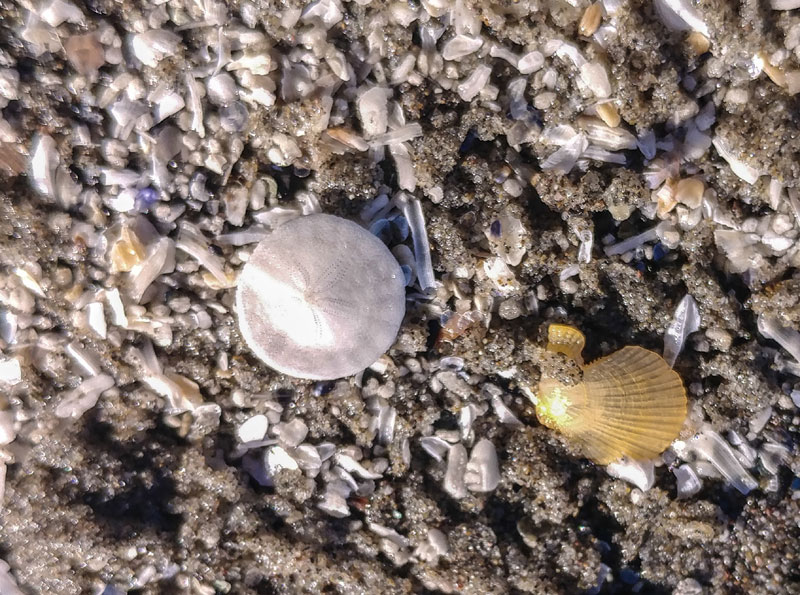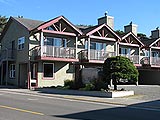Curious Bits About Sand Dollars on Oregon Coast / Washington Coast You Didn't Know
Published 01/09/22 at 6:22 PM PST
By Oregon Coast Beach Connection staff

Includes exclusive listings; some specials in winter
In Cannon Beach:
Includes rentals not listed anywhere else
In Manzanita, Wheeler, Rockaway Beach:
Some specials for winter
In Pacific City, Oceanside:
Some specials for winter
In Lincoln City:
Some specials for winter
In Depoe Bay, Gleneden Beach:
Some specials for winter
In Newport:
Look for some specials
In Waldport
Some specials for winter
In Yachats, Florence
Some specials for winter
Southern Oregon Coast Hotels / Lodgings
Reedsport to Brookings, places to stay; winter deals
(Cannon Beach, Oregon) – Woe is the tiny, lowly sand dollar of Oregon and Washington coast. They're fated to live exclusively in varied patches at the nearshore environment, forever swaying and twitching at the whims of currents rushing about them. Then, when they pass on, they're sometimes tossed up onto the sands and then usually crushed into little pieces by footsteps or just the tossing of the tides. (Photo above Seaside Aquarium)
Along the Oregon coast or Washington coast, there are countless such sand dollar beds, but “beds” is not a technical term. Sand dollars live in patches just offshore, somewhere just west of the tideline to some degree. They are prolific little critters, reproducing at enormous rates and thus sometimes living densely next to each other. They're sometimes packed together as much as 600 or more in a square yard.
As common as they are to the Oregon coast or Washington coast, people know little about them. Here's a few fun, intriguing facts.
Normally, if you find them on the Oregon coast or Washington beaches, they're a bleached out white or gray. They're dead, usually. But how to tell if you've found a live one?
It's rare – really rare. But it happens, according to Seaside Aquarium's Tiffany Boothe.
If it's purple, it's still alive. Also, if you're seeing fuzz-like hair, that's a sign of a still-living sand dollar as well.
“The outside of their shell is covered with millions of tiny spines which look like 'fuzz' or hair,” Boothe said. “These spines aid in the movement and feeding of the sand dollar.”
This means if you find a sand dollar that is still fuzzy, you'll want to leave it alone. It's still alive. Grabbing one and putting it in your car will yield an unpleasant surprise: they stink really fast.
A massive run of live sand dollars happened this past summer in Seaside. Some set of coincidental tidal conditions occurred at just the right time and upended them from their home in the briny deep, tossing them still-living onto shore. It made quite the spectacle, and resulted in more than a few internet rumors and armchair experts on social media who somehow knew more than the experts.
The north Oregon coast's Seaside and Gearhart areas are well known for their proliferation of sand dollars – and not just those broken bits you normally find. Whole sand dollars are found here in large numbers, although scientists don't know exactly why.

Part of the reason is that there are simply so many just offshore, and part of that reason is because there's an unusual amount of nutrients pouring down from the Columbia River that feed the plankton of the area – which sand dollars eat. Thus, more sand dollar beds. What isn't known is why they get tossed up here on this stretch of beach so often.
One of the big factors, however, is that not many people venture close to the south or north mouth of the Necanicum River, which leaves a lot of these sand dollars whole and untouched.

Above: baby sand dollar, courtesy Seaside Aquarium
Another fun fact: you can sometimes find baby sand dollar shells in the sands. However, there's a whole trick to that, according to Boothe.
“Take a look at the strip of lighter colored sand running along the beach,” she said. “This lighter colored sand is composed of tiny bits of shell making it lighter than the surrounding sand. This is where you are most likely to find small sand dollar shells. So next time you are out on the beach at low tide keep an eye out for that strip of lighter sand and if you do come across it take a closer look. Some of the sand dollars can be smaller than an eraser.” MORE PHOTOS BELOW
Oregon Coast Hotels for this event - South Coast Hotels - Where to eat - Maps - Virtual Tours
Cannon Beach Lodging
Nehalem Bay Lodgings
Manzanita Hotels, Lodging
Three Capes Lodging
Pacific City Hotels, Lodging
Lincoln City Lodging
Depoe Bay Lodging
Newport Lodging
Waldport Lodging
Yachats Lodging
Oregon Coast Vacation Rentals
Oregon Coast Lodging Specials
Living sand dollar, courtesy Seaside Aquarium.
More About Oregon Coast hotels, lodging.....
More About Oregon Coast Restaurants, Dining.....
LATEST Related Oregon Coast Articles
Through 2 a.m. likely best, but some lights possible through dawn June 1 - 2. Space weather, astronomy
Rare Sperm Whale Stranding on N. Oregon Coast, Was Hit by Boat
Showing up near Gearhart, it will decompose naturally. Marine sciences
Coast Guard Barque 'America's Tall Ship' Coming to Portland Rose Fest, N. Ore...
Portland events: June 5 - 8; Astoria events June 13 - 15. Weather
Bright and Active Arietids Meteors May Hit Pre-Dawn Hours of Oregon, Washingt...
Look to east hour before sunrise and you may catch a show. Sciences, astronomy, weather
Why Now Could Be a Great Week for Spotting Killer Whales on Oregon Coast - Video
A good dozen documentations around Depoe Bay, Newport, Coos Bay, Bandon, Tillamook. Marine sciences
Summer Road Work, Traffic Issues Along Oregon Coast Include Astoria, Garibald...
Some daylight closures include bridges, OR 22, OR 18, OR 26, more. Travel tips. Seaside, Cannon Beach, Lincoln City. Travel tips
Pacific City Oregon Weather, 7-Day Forecasts, Live Conditions, Radar, Webcams...
Updated Constantly: Pacific City, Tierra Del Mar, Oregon Weather, Cams, Buoy Observations, Tides, Warnings - Alerts
Oregon Coast Has World's Oldest Harbor Seal, Celebrating 50 Years Soon
June 3 at Oregon Coast Aquarium in Newport. Newport events
Back to Oregon Coast
Contact Advertise on BeachConnection.net
All Content, unless otherwise attributed, copyright BeachConnection.net Unauthorized use or publication is not permitted






















































